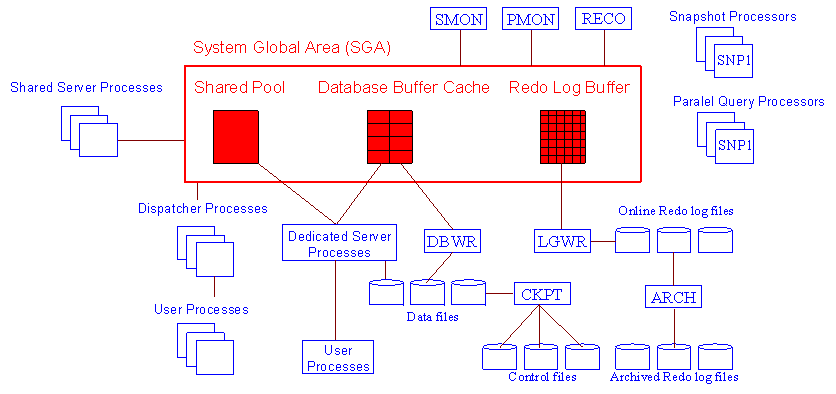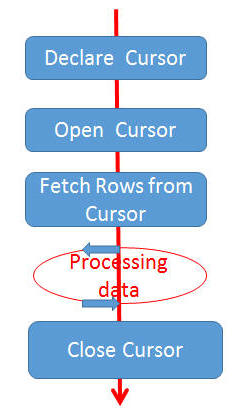| |
| Cursor is a pointer to a PRIVATE work area , which contains data or
information retrieved with SQL statements( a dataset encapsulated within
a system defined memory space) . Cursors are automatically generated by
Oracle utilities like SQL*Plus. |
| Oracle Holds SQL statements in a SHARED SQL AREA.Please refer to
this document,
dynviews_2108.htm , for the details about the SQL SHARED MEMORY used
with CURSOR.


There are four steps to rollup a cursor, DECLARE, OPEN, FETCH AND
CLOSE the cursors.

|
| An Implicit cursor is the one, which is created "automatically" as
one query is executed. An implicit cursor is generated de novo with a
DML statement with INSERT, UPDATE OR DELETE clauses. The most
recent implicit cursors can be handled with 5FOUND, %ISOPEN, %NOTFOUND
and %ROWFOUND . An explicit cursor is created by the user by writing
codes with PL/SQL
Explicit cursor tender more dynamic and manageable
programmatically .
A demo PL/SQL Cursor Script:
declare
cursor emp_cur is select c from emp
order by sal DESC;
var_name VARCHAR2 (10);
var_empno NUMBER (4);
var_sal NUMBER (7,2);
BEGIN
OPEN emp_cur;
for i in 1..5 LOOP
fetch emp_cur INTO var_name, var_empno, var_sal;
EXIT WHEN emp_cur%notfound;
dbms_output.put_line (var_name||var_empno||','||var_sal);
end loop;
close emp_cur;
end;
/
|
| I shall post some examples, later , in this series of documents.
|
 |
| Note: I would like to add few lines about retrieving Cursor variables
into a Visual Studio Recordset; scope of OLE-DB is huge at this
juncture. |
| |



